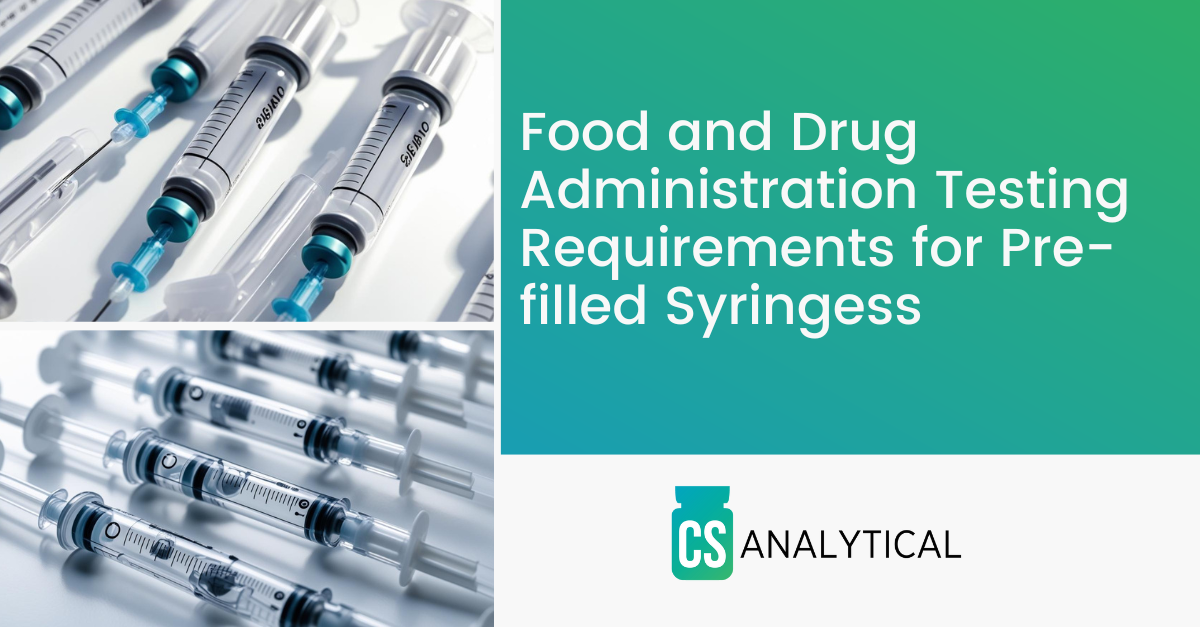 The Food and Drug Administration (FDA) plays a crucial role in safeguarding public health by regulating the development, manufacturing, and marketing of medical products, including pre-filled syringes (PFS). These devices are pivotal in the administration of medications due to their convenience and precision. As such, the FDA has established rigorous testing requirements to ensure that pre-filled syringes are safe, effective, and of high quality before they reach patients.
The Food and Drug Administration (FDA) plays a crucial role in safeguarding public health by regulating the development, manufacturing, and marketing of medical products, including pre-filled syringes (PFS). These devices are pivotal in the administration of medications due to their convenience and precision. As such, the FDA has established rigorous testing requirements to ensure that pre-filled syringes are safe, effective, and of high quality before they reach patients.
Regulatory Framework
The FDA categorizes pre-filled syringes as combination products because they consist of both a drug and a delivery device. Consequently, the regulatory pathway for PFS must address both drug and device requirements. This dual oversight ensures that both components meet stringent safety, efficacy, and performance standards. The review process typically falls under two primary categories: New Drug Applications (NDA) for drug components and Premarket Approval (PMA) or 510(k) submissions for device components.
Preclinical Testing
Before obtaining FDA approval, manufacturers must conduct extensive preclinical testing to assess the compatibility of the drug with the syringe materials. This testing also evaluates the mechanical properties of the syringe, including the integrity of the seal, the ease of use, and the potential for contamination. Compatibility studies are critical to establish that the drug formulation does not interact negatively with the syringe materials, which could compromise potency or safety.
Biocompatibility and Stability Testing
Biocompatibility testing is essential for ensuring that materials used in the pre-filled syringes do not produce adverse biological responses when in contact with human tissues. The ISO 10993 standard outlines specific tests that must be performed to evaluate cytotoxicity, sensitization, and other potential adverse effects.
Stability testing is another critical requirement. Manufacturers must confirm that the drug formulation maintains its quality, potency, and purity throughout its shelf life when stored in a pre-filled syringe. Stability studies often involve accelerated aging tests and real-time evaluations under various environmental conditions to simulate actual storage scenarios that the product may encounter.
Performance Testing
The FDA mandates rigorous performance testing to ensure that pre-filled syringes function as intended. This includes assessments of mechanical performance to evaluate factors such as the force required to expel the drug, the accuracy of the dosage delivered, and the potential for leakage. Performance testing protocols may involve various simulations, such as those that mimic real-world administration scenarios, to ensure reliability and safety during actual use.
Labeling and Instructions for Use
Clear labeling is crucial for the safe administration of medications using pre-filled syringes. The FDA requires that manufacturers provide comprehensive instructions for use, including proper handling, preparation, and administration techniques. The labels must also convey relevant safety information, such as potential side effects and contraindications.
Post-Market Surveillance
Even after obtaining FDA approval, the responsibility of ensuring product safety continues through post-market surveillance. The FDA monitors the performance of pre-filled syringes after they enter the market, collecting data on adverse events and conducting inspections to assess compliance with regulatory standards.
Conclusion
The testing requirements established by the FDA for pre-filled syringes are rigorous and comprehensive, reflecting the critical role these devices play in modern healthcare. By addressing aspects of safety, efficacy, and performance, these testing protocols help ensure that pre-filled syringes deliver medications effectively and safely to patients. As the landscape of pharmaceuticals and healthcare continues to evolve, the FDA’s commitment to thorough evaluation and regulation remains essential in safeguarding public health. Through diligent oversight, the agency fosters innovation while prioritizing patient safety, ultimately contributing to more effective and reliable drug delivery systems.

